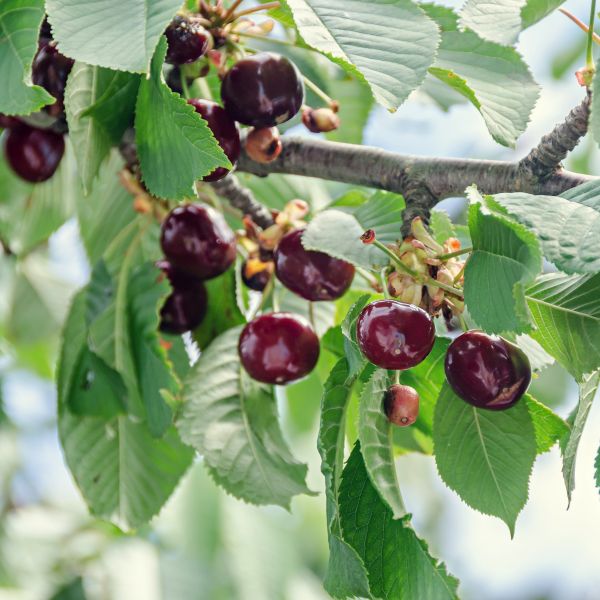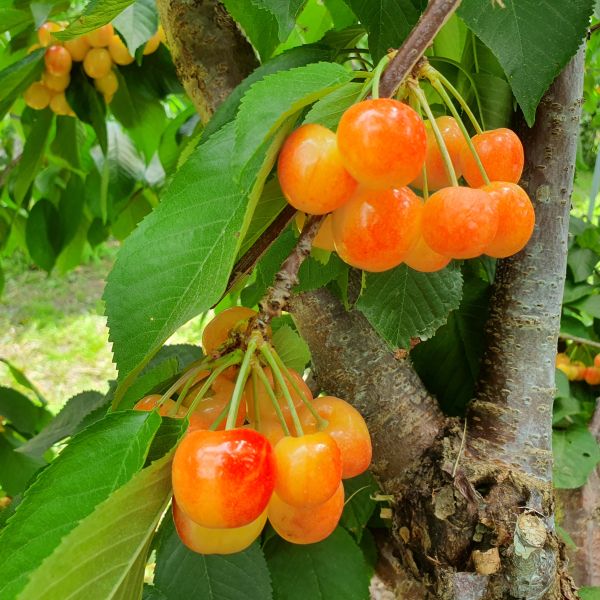


Chestnut Hill Cherry Laurel
Prunus laurocerasus 'Chestnut Hill'
14 reviews
Chestnut Hill Cherry Laurel
Prunus laurocerasus 'Chestnut Hill'
14 reviews
- Fast-growing evergreen shrub
- Tolerates a variety of soil types and conditions
- Provides year-round interest with glossy green leaves and white flowers
$117.00
$168.00
30% Off
- Ships to in 3 to 7 days
- Free Shipping Over $150
- Plant Arrival Guarantee
- In Stock
- Free Plant Consult
$200
- 3.5 Gallon
- 1 Gallon
Why Chestnut Hill Cherry Laurel?
Chestnut Hill Cherry Laurel is a popular evergreen shrub with glossy, dark green leaves that bring a lush and vibrant look to any garden. It is highly valued for its dense growth and excellent screening qualities, making it a perfect choice for hedging or privacy fencing. Moreover, it is drought-tolerant, low-maintenance, and grows well in full sun to partial shade, making it a versatile and easy-to-grow plant.
People who loved this plant also bought
Sunlight
Chestnut Hill Cherry Laurel requires full sunlight to partial shade.
Watering
The Chestnut Hill Cherry Laurel has average watering requirements. It prefers well-draining soil and should be watered regularly to keep the soil evenly moist. However, it is also tolerant of short periods of drought once established.
Fertilizing
Chestnut Hill Cherry Laurel generally requires a balanced fertilizer with equal or slightly higher amounts of nitrogen (N), phosphorus (P), and potassium (K). It is advisable to follow specific fertilizer instructions provided by the manufacturer for optim
Chestnut Hill Cherry Laurel: A Timeless Beauty
The Chestnut Hill Cherry Laurel, Prunus Laurocerasus Chestnut Hill, is an absolute must-have for garden enthusiasts, landscape designers, and anyone seeking a low-maintenance, yet visually striking addition to their outdoor space. This evergreen shrub offers an array of benefits that make it an irresistible choice.
Native to southeastern Europe and western Asia, the Chestnut Hill Cherry Laurel is beloved for its year-round glossy green foliage and fragrant white flowers. Its leaves are large, leathery, and lance-shaped, making them highly resistant to disease and insect infestation. Additionally, they emit a pleasant aroma when crushed, adding an extra sensorial experience to your garden.
Beyond its beauty, the Chestnut Hill Cherry Laurel is highly regarded for its versatility in landscaping. This shrub can grow to an impressive height of eight to ten feet. It can also be used as a focal point, adding interest and structure to your garden design.
Another benefit of Chestnut Hill Cherry Laurel is its tolerance to harsh environmental conditions. It thrives in a range of climates and tolerates dry shade. It can grow in partial shade or full sun, and it is incredibly drought tolerant, requiring minimal watering once established.
The Chestnut Hill Cherry Laurel is a top choice for those seeking a low-maintenance plant that delivers big on beauty and benefits. Its evergreen foliage, adaptability, and disease resistance make it an excellent option for adding beauty and privacy to any outdoor space. Whether you're an experienced gardener or just starting, you can effortlessly enhance your garden with the Chestnut Hill Cherry Laurel. Order yours today and watch your garden transform into a serene and inviting sanctuary.
With proper care, Chestnut Hill Cherry Laurel will thrive in your landscape for many years to come. Order yours today!
Plant Information:
| Botanical Name: | Prunus laurocerasus 'Chestnut Hill' |
| USDA Zones: | 6 - 9 |
| Water: | Moderate |
| Exposure: | Full Sun |
| Soil Needs: | Well Drained |
| Mature Height: | 4 feet |
| Mature Spread: | 4 feet |





Pollination Info
Pollination Info for Chestnut Hill Cherry Laurel (Prunus laurocerasus 'Chestnut Hill')
Chestnut Hill Cherry Laurel is a self-fertile plant, meaning that it can produce fruit on its own without the need for cross-pollination with another variety.
However, planting multiple Chestnut Hill Cherry Laurel plants in the same area can increase fruit production and improve the quality of the fruit. Cross-pollination between plants can also create genetic diversity and improve the overall health of the plant population.
Chestnut Hill Cherry Laurel is pollinated by bees and other insects, which transfer pollen from the male reproductive organs (stamens) of one flower to the female reproductive organs (pistils) of another flower. The movement of pollen can occur through wind or water, but insect pollination is generally more effective because it ensures that the pollen reaches the correct flower.
To attract pollinators to your Chestnut Hill Cherry Laurel plants, you can provide a variety of flowering plants nearby that will also attract bees and other insects. Some suggestions include lavender, salvia, butterfly bush, and other flowering shrubs and perennials.
FAQ
Chestnut Hill Cherry Laurel FAQ
What is a Chestnut Hill Cherry Laurel?
The Chestnut Hill Cherry Laurel, also known as Prunus laurocerasus 'Chestnut Hill', is an evergreen shrub that can grow up to 12 feet tall and 8 feet wide. It is native to regions in Europe and Asia and is commonly used as a hedge or screen due to its dense foliage and fast-growing nature.
How do I plant a Chestnut Hill Cherry Laurel?
It is best to plant a Chestnut Hill Cherry Laurel in well-draining soil with partial to full sun exposure. Dig a hole that is twice the size of the root ball and backfill with soil, then water thoroughly. It is recommended to plant multiple Chestnut Hill Cherry Laurels 4-6 feet apart to create a hedge or privacy screen.
How do I care for a Chestnut Hill Cherry Laurel?
A Chestnut Hill Cherry Laurel requires regular watering and fertilizing in the first year after planting to establish strong roots. After the first year, it is drought-tolerant but will benefit from occasional deep watering during prolonged dry spells. It is also recommended to prune the shrub annually in late winter to maintain its shape and size.
Can a Chestnut Hill Cherry Laurel be grown in a container?
Yes, a Chestnut Hill Cherry Laurel can be grown in a container with well-draining potting soil. However, it will require regular watering and fertilizing to thrive in a container. It may also need to be pruned more frequently to maintain its size.
Is a Chestnut Hill Cherry Laurel toxic?
Yes, all parts of a Chestnut Hill Cherry Laurel contain hydrogen cyanide and are toxic if ingested by humans and animals. It is recommended to wear gloves when handling the plant and to prevent children and pets from accessing it.
Is a Chestnut Hill Cherry Laurel deer-resistant?
Yes, a Chestnut Hill Cherry Laurel is deer-resistant due to its toxic leaves and stems. However, it is still susceptible to damage from other animals and pests.
Planting & Care
- Choose a spot with well-draining soil and good sunlight.
- Dig a hole twice as wide and deep as the root ball.
- Loosen the soil at the bottom of the hole.
- Place the root ball in the hole and fill the hole with soil, tamping it down as you go.
- Water the plant thoroughly. Care:
- Water the plant regularly during the first growing season, and as needed thereafter.
- Mulch around the base of the plant to help retain moisture and suppress weeds.
- Fertilize in the spring with a balanced fertilizer.
- Prune in the late winter or early spring to maintain a desired shape and size.
- Watch for signs of pest infestation or disease, and take action promptly if necessary.
Check Out These Verified Customer Reviews:
Customer Reviews
4.8 out of 5 based on 14 reviews
Thank you! Your review has been submitted.
The Chestnut Hill Cherry Laurel arrived in perfect condition, and I was delighted by its lush green appearance. The website was easy to navigate, and the shipment was quick. Customer service was top-notch.
Customer service was responsive and helpful when I had a question about the Chestnut Hill Cherry Laurel. Great experience overall.
Easy website navigation
Item has been added to your cart.






















